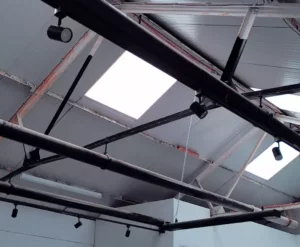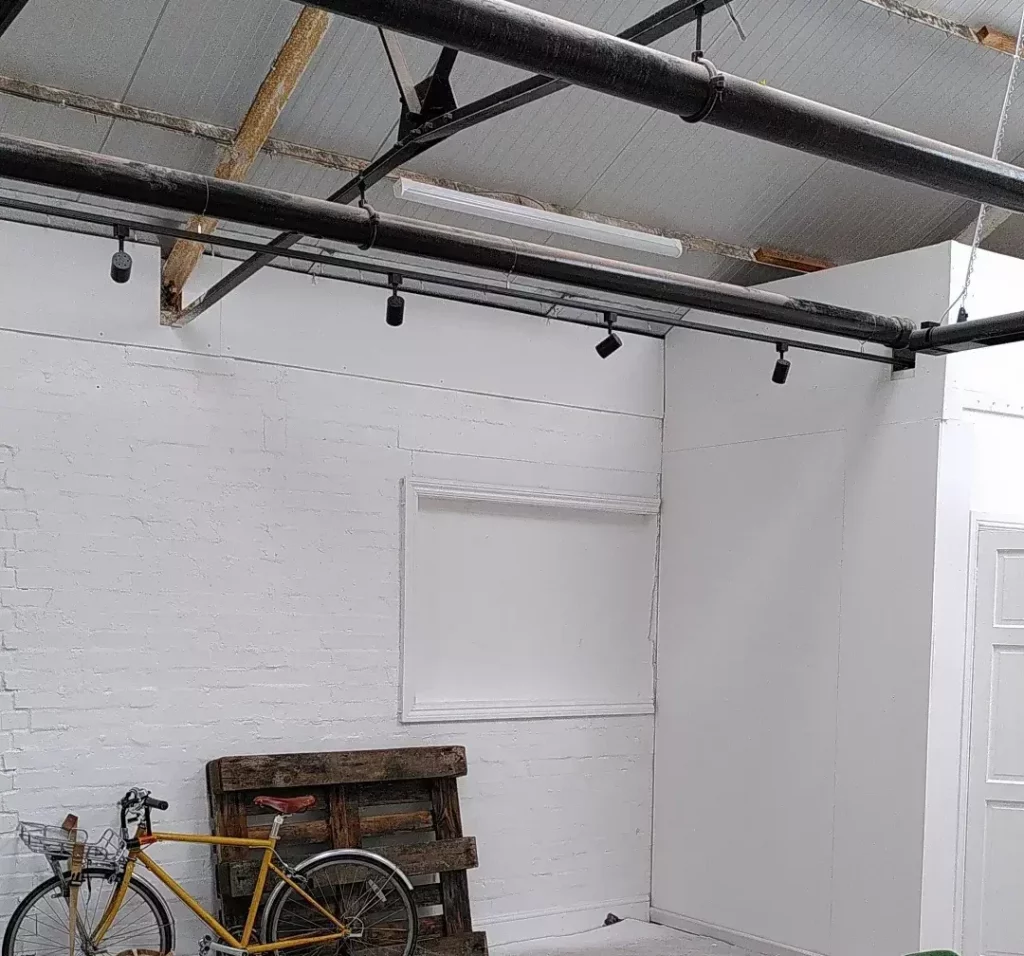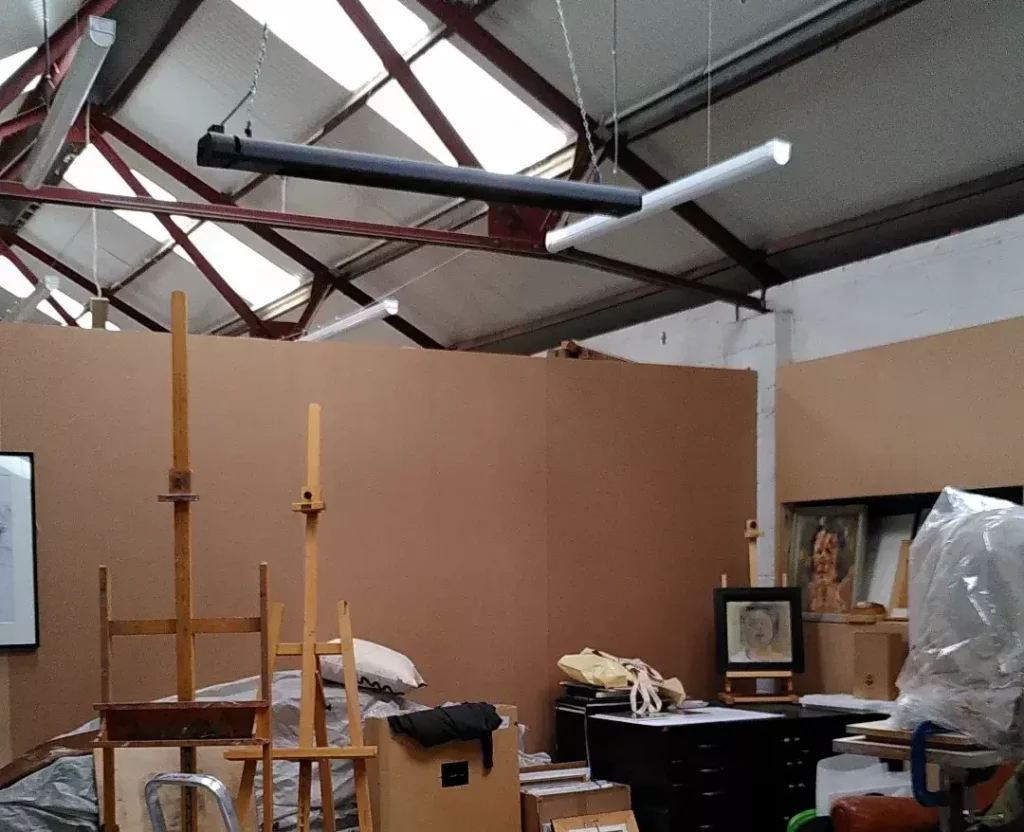Community arts space improves lighting, heating and insulation, saving energy money and carbon
Magdalen Road Studios is an arts charity run for the benefit of the community in the heart of East Oxford. Following a comprehensive energy assessment, they discovered the potential to lower their energy expenses and their carbon footprint through the upgrade of their lighting and heating systems.
The building was also very poorly insulated and therefore a cold and uncomfortable space to work in the winter.
Find out more in the video below:
Energy-saving measures recommended
The studio’s Workplace Energy Efficiency Assessment identified some key areas of improvements, including: LED lighting, insulation, and infrared heaters to make the space a more welcoming environment for artists and visitors.
7,345 kWh
predicted annual energy saving
1.72 tonnes
predicted annual carbon saving
£1,463
predicted annual cost saving
The action report showed that these recommendations would bring about significant improvements, saving £1,463 on energy bills annually and cutting carbon emissions by 1.72 tonnes a year.
Roof improvements
The roof was replaced with high-spec insulated panels. The introduction of roof-lights meant that the amount of daylight into the space increased by 30% – a real benefit for the artists using the space.
The old roof was an asbestos uninsulated construction that leaked. Together with faulty drain pipes and guttering this had previously made the space very damp.
The roof insulation minimises heat losses in winter, reduces heat gains in summer, improves comfort levels for visitors and reduces annual energy bills by reducing the amount of energy needed to heat the building.

LED lighting
The new LED lighting not only saves energy, but has three settings so artists can choose the type of light they want: white light, warm light, or daylight equivalent.
Infrared heating warms the space
Infrared heaters with sensors – which instead of heating the air, heat objects, surfaces, and people in a room directly – have also been added as suspended units from the ceiling. The sensors mean that space is only heated if it’s being used, which saves on energy waste.
Insulated walls and doors
The roller doors at the front of the building have been retained, but these and all the solid exterior walls have been insulated with 100mm of rockwool, to improve the thermal efficiency of the building.


Added benefits
A fire corridor and visitor route were also included in the building upgrade at the same time, which enables full wheelchair access to the individual studio spaces, without the previous inconvenience of walking through other studios.
Following these improvements, the Studio has become an increasingly attractive place for artists to work and is now at full capacity with a waiting list.
Discover how you could be saving energy with an Energy Assessment
Are you inspired to reduce your energy waste? We can help. Book an Energy Assessment with our expert team and find out how you manage your energy to save money on your bills and cut your carbon emissions.
Businesses typically save 19% on energy costs after implementing our recommendations.
